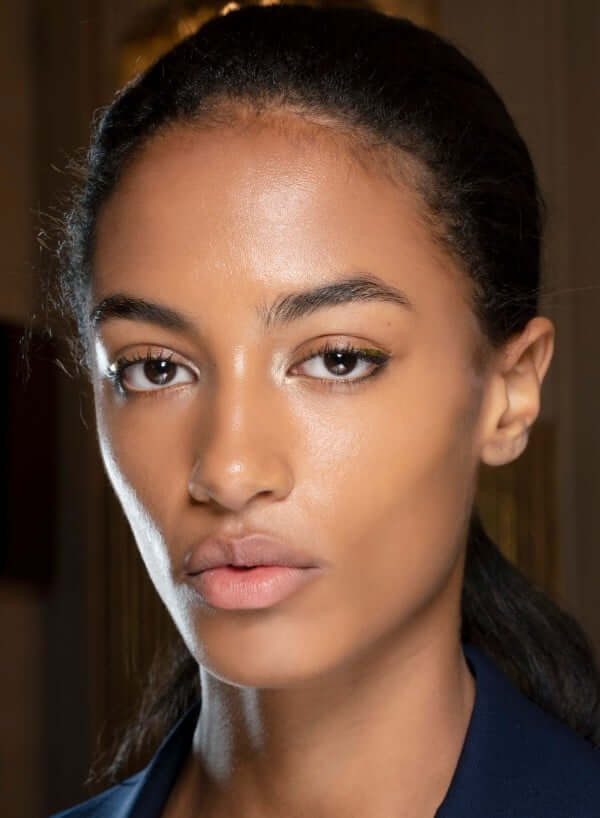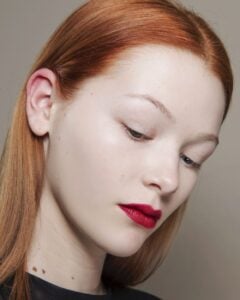As we get older, we lose volume in the four main structures of our face: muscle, bone, fat, and skin. Even the best skincare routine in the world can’t restore that kind of volume. Luckily, we live in the age of facial fillers, also known as dermal fillers.
The differences in the face from fillers before and after treatment can be transformative. And they’re not just for restoring volume in an aging face. They can also plump and contour already youthful faces that lack contours, like mile-high cheekbones.
Both the more mature and young can benefit from facial fillers… and we’re going to reveal some of the most common uses of derma fillers.
WHAT ARE FILLERS?
Dermal fillers are injections of different fluids and gels that are placed subcutaneously (under your skin). They can fill out wrinkles and add volume to the soft tissues in your face.
Hyaluronic Acid dermal fillers are considered the most popular among most experts. Below are some popular Hyaluronic Acid-based dermal fillers brands:
Juvéderm: Juvéderm XC, Voluma, Volbella, Vollure
Restylane: Restylane Silk, Restylane Lyft, Restylane Refyne, and Restylane Defyne
Teosyal: Teosyal RHA 1, Teosyal RHA 2, Teosyal RHA 3, Teosyal RHA 4, Teosyal RHA Kiss
Each type of filler has its own benefits and purposes. Depending on the results you’re looking for and the type you’re having injected, they can be injected around the eyes, into the cheeks, as well as around the mouth and jawline. Some people use them solely for the purpose of plumping their lips!
HOW LONG DO FILLERS GENERALLY LAST?
After dermal fillers, results will generally last between 6 to 18 months. Although some experts say that dermal fillers actually last longer than generally believed.
The length of the results depends on how your body reacts, what type of filler is used, lifestyle choices (i.e. smoking, drinking), and how regimented you are in your skincare routine (i.e. sunscreen).
Below, we’ll get into more detail as to their benefits and what to expect for fillers before and after treatment.
FILLERS BEFORE AND AFTER: VOLUME
Our body slows down as we age in a variety of ways. One of the most important processes that slows as we age, and which directly affects our skin, is the production of collagen and elastin.
These proteins are what give our skin volume and the production of each begins to decrease around the age of 25. After that, we start to lose these proteins at a rate of about 2% per year. By the time you’re in your late 20’s, your body stops producing them altogether.
And that’s when great skincare kicks in. But, as we said, there’s no skincare routine that can replace collagen and elastin at the same rate at which we lose it. For that, people have turned to fillers.
There are two popular types of fillers that can replace volume: hyaluronic acid or autologous fat injections. The former is a material found naturally in the body and synthetically made for injections that plump and volumize. The latter is a type of filler material that actually comes from your own body.
As in, fat deposits are harvested from donor parts of your own body (like your tummy or your buttocks) and then injected into areas where you’ve lost volume. Unlike other types of injectables, dermal fillers of analogous fat injections are (more) permanent. They can also be used in parts of your body besides the face, such as your hands, your chest, or your lower neck.
FILLERS BEFORE AND AFTER: WRINKLES
As our collagen and elastin production slows down, our facial tissues begin to thin and hollow. That facial tissue thinning is what leads to the formation of fine lines and wrinkles around the nose and the mouth. It also causes more sallow-looking cheeks.
Because they’re made to volumize, the results from dermal fillers after treatment include the smoothing and evening-out of wrinkles and fine lines. They work on marionette lines, smile lines, parentheses, and also diminish vertical lip lines closer to the lips as well.
People seek dermal fillers for hollows, lines, and wrinkles because of the speed and ease of the results. They can fill those depressions in less than 30 minutes, and they’re a lot less expensive than a facelift or other more invasive procedures.
FILLERS BEFORE AND AFTER: HYDRATION
A lesser-known benefit of fillers is hydration. That’s because hyaluronic acid is a naturally occurring substance that your body produces all on its own. In its injectable form, it attracts and binds with water, which means you get deep hydration from the inside-out.
FILLERS BEFORE AND AFTER: CONTOURING
Facial contouring is one of the ways injectables are used by both young and old. This is a process in which a combination of dermal fillers is used to create a more contoured facial structure.
In these applications, injections are usually concentrated in the cheeks, chin, and jawline. Injections are concentrated in these areas because they’re the most important area when it comes to creating a contour.
The cheeks and temples are considered the anchors of the face – how these are shaped has the biggest impact on the structure of the surrounding features. For example, dermal filler injected to bring volume to the cheeks will enhance your cheekbones, define your brows and jawline, and even lift the mouth and the lower face (aka chin and jawline).
Similarly, dermal fillers can be used to bring symmetry to asymmetrical features. Asymmetry might be caused by genetics, environmental factors, or even things like sleeping too much on one side of your face. Whatever the cause, facial fillers can correct asymmetry and bring balance to your facial features without the invasiveness and expense of surgical procedures.
FILLERS BEFORE AND AFTER: LIPS
Over the last decade or so, fillers have increasingly been used for lip plumping. Mainly, dermatologists and other professionals prefer hyaluronic acid for adding fullness to lips. These types of dermal fillers are approved by the FDA for this purpose, amongst others.
FILLERS BEFORE AND AFTER: NOSE
Year after year, nose reshaping surgery is one of the most common surgical procedures performed in the US. Some people reshape the nose for cosmetic reasons, like ridding of a bump or making the nose straighter. A nose job can also be used for functional reasons such as correcting breathing problems.
But surgical options aren’t the only option for correcting those issues. A liquid nose job, or a non-surgical nose correction performed with fillers, accomplishes the same benefits as the more invasive methods. The difference is that these results are temporary, lasting anywhere from six to twelve months.
The other difference between surgical nose procedures and using fillers is that fillers can’t make your nose smaller. Instead, they’re used to alter the shape of the nose, to make bumps less visible, to make the nose appear straighter, or to modify the tip of the nose.
FILLERS BEFORE AND AFTER: UNDER THE EYES
Like so many other things that come with age, the number of bone regenerating cells in our face decreases as we get older. That leads to the widening of the bone around our eyes which, in turn, leaves less of a scaffold for skin and fat to sit on top of. And it’s precisely this that causes dark circles, hollow tear troughs, and even wrinkles and folds in the under-eye area.
All of these issues are easily fixed with a small layer of hyaluronic gel applied in under the eyes. This lifts up your delicate skin and fatty tissue and plumps the area with the volume that used to be there.
However, fillers under the eyes don’t work for all types of dark circles. If your dark circles or hollow-looking tear troughs are the results of pigmentation, then dermal filler won’t help. It also can’t help with large bags under the eye, as its purpose is to restore volume and not remove what’s already there.
FINAL THOUGHTS
When dermal fillers are done well – the results can be almost magical. For those trying to minimize the visible signs of age, benefits include volumizing the parts of our face that lack volume, reducing the appearance of fine lines and deep wrinkles, and even boosting our own ability to produce collagen. For those who aren’t yet dealing with those issues, injections can be beneficial for facial contouring, restoring hydration, and plumping thin lips.
Whatever the cause, they’re an affordable and minimally invasive treatment that gives results well beyond what any skincare routine can achieve.



